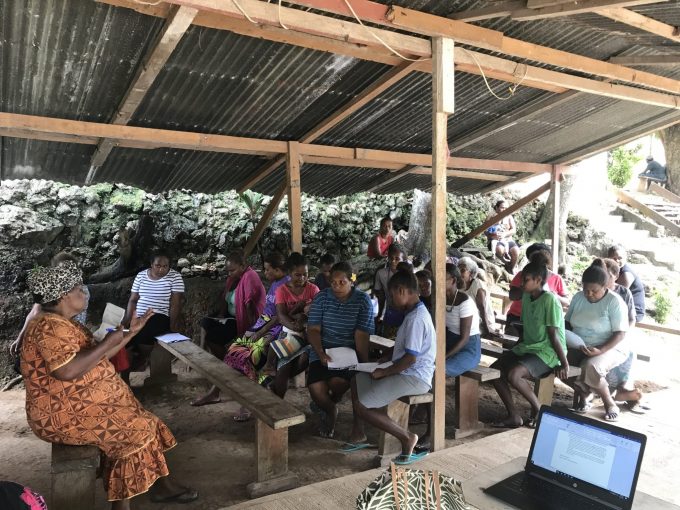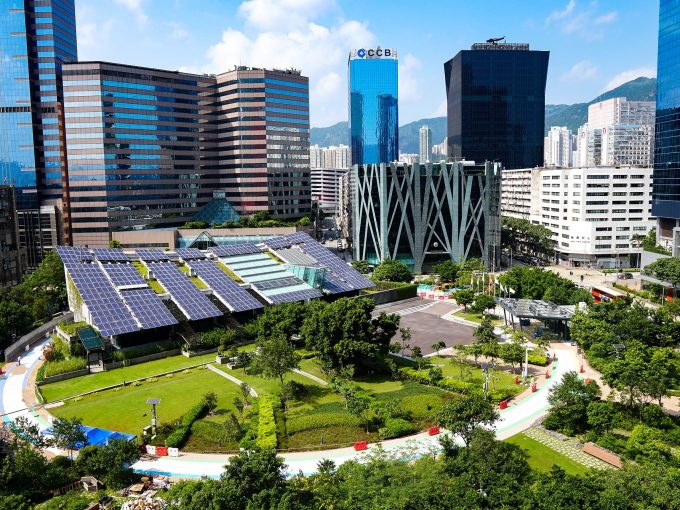As our cities evolve, so too should our approach to building and planning our urban habitats. Here, six RMIT urban researchers share how their work is shaping how we live in our cities and with nature.
The RMIT Centre for Urban Research is home to some of Melbourne’s leading planning and sustainability academics driving the discussion on urban affairs.
Meet six women who are contributing to the research and conversation that is changing how we plan and build healthy, equitable and liveable cities and regions.
Helping children find their role in disaster risk reduction
The frequency of natural hazards and disasters is on the rise and children are highly vulnerable to the devastating impacts.
Funded by the Bushfire and Natural Hazards Cooperative Research Centre, Dr Briony Towers has been conducting research with children, schools and families in high risk areas around Australia for over ten years.
Her research suggests that when children have access to knowledge and information and are supported to actively participate in disaster risk reduction, they can make a valuable contribution to the safety of their households, schools and communities.
“When children have the opportunity to learn about the hazards in their local area, they really want to be involved in developing strategies that will help keep them and their communities safe during a major hazard event,” she said.
“They often identify problems that adults have overlooked.”
Towers said people often assumed that learning about natural hazards and disasters would cause children unnecessary fear and anxiety however, her research found that the opposite is true.
“When we work together with children to develop risk reduction strategies that meet their needs and priorities, they are actually a lot less afraid of things like bushfires and floods,” she said.
“Children are playing an essential role in that process; we just need to listen to them carefully and make sure we act on what they tell us.
“It’s really exciting to be working with schools, emergency management agencies and non-government organisations to amplify children’s voices in disaster risk reduction.”
Apartment living for the evolving Australian household
Where we make a home is a fundamental aspect of our lives and influences the way we experience the city daily.
Since 2016, for the first time in Australia, new apartments outnumbered newly built standalone houses, with high-rise living playing an important part in this evolution.
Originally from France, urban geographer and housing scholar Dr Louise Dorignonis investigating the spatial dynamics of apartment living for families and individuals from various social backgrounds such as gender, class, culture and age.
Currently part of Linkage Project HOME (Housing Outcomes Metrics and Evaluation), her work examines the many challenges associated with making a home in an apartment dwelling.
“Faced with changing needs and living conditions, urban dwellers lives are entwined with the politics of apartment buildings, yet we still don’t really understand the challenges emerging from multi-storey dwellings,” Dorignon said.
“At the apartment level, there are many reconfigurations made by households to appropriate domestic space that reflect the diversity of residential pathways and financial situations within apartment buildings, which shape the way people live in the city.
“I am particularly interested in finding out how social relations, including those of care, intimacy or power, shape housing experiences and trajectories.
“Understanding the great diversity of uses and practices in ‘the vertical city’ may hopefully lead to recognising household struggles in planning future homes and improving existing ones.”
Expanding nature stewardship in cities
In cities and townships, greenery is diminishing and native species disappearing. This can impact human health, wellbeing, and other social needs.
A conservation practitioner, and former CEO of Zoos Victoria, Dr Laura Mumaw is investigating how we can embed urban nature stewardship in policy and action for environmental and social benefits.

“Our focus is on approaches that partner community members with local government, link conservation work on private and public land, and across municipalities, and empower citizens to contribute,” she said.
Mumaw researches and helps lead Gardens for Wildlife Victoria, a growing network with participants from 38 of Victoria’s 79 local government areas.
“These citizens and council staff codesign programs that engage local residents in gardening to foster locally native flora and fauna,” she said.
“Linking different municipal programs creates ongoing innovation and expands the scale and impact of work.
“Their work builds a stewardship ethic and skills, community connections, personal wellbeing, and hope for the future.”
How good city planning can benefit our health
In Australia, 80 % of ill health and early deaths can be attributed to diseases which are not transmissible or infectious, often referred to as non-communicable diseases (NCDs).
Often these diseases are preventable, and modifiable risk factors, such as physical inactivity and obesity, are responsible for one third of the burden from NCDs.
Internationally and in Australia, the health sector alone cannot tackle the rising burden associated with NCDs and their underlying risk factors.
According to Vice Chancellor Postdoctoral Fellow Dr Belen Zapata-Diomedi, city planning can greatly help to reduce NCDs by encouraging more active living, leading to improved population health.
“My research is looking to develop methods and generate scientific evidence to demonstrate that cities which support active living deliver improved population health, economic value and sustainable cities,” she said.
“At RMIT, I am working with transport practitioners and decision makers to support the inclusion of health in transport decision making.
“The results of this research will benefit our community immensely by enabling them to be more active, which in turn will improve their health and support a sustainable future.”
Community-led action for disaster and climate resilience
There is a common assumption that community-led processes are slow and require a lot of resourcing.
However, research suggests they are in fact quite the opposite and lead to much more satisfied and stronger communities.

Originally from India, built environment designer and disasters scholar, Dr Mittul Vahanvati is investigating ways community-led processes before and after disaster can enable communities to be resilient to uncertain futures.
Currently, Vahanvati is working with the rural community of Tarnagulla in Central Victoria to co-produce their own resilience action plan to adapt for future climate extremities and emergency management, such as heatwaves and bushfires.
“The very act of bringing community members with varying views together creates a mutually trusting space for sharing views,” Vahanvati said.
“By increasing the community’s awareness of their strengths, challenges and risks, we can arrive at a shared long-term vision and empower them to explore community-led initiatives to achieve their vision for strengthening resilience.”
Vahanvati is currently working with communities in Honiara, Solomon Islands on similar action-research projects.
Improving homes to become more energy efficient
With rising energy bills becoming the new normal, many households across Australia are struggling to afford basic necessities like heating and cooling.
Environmental sociologist Dr Bhavna Middha is examining people’s lived experiences of energy retrofitting and energy poverty for the Home Improvements and Upgrades (HEET) project.
“Evidence shows that there are multiple benefits of improving the quality of houses for better human comfort and health, and for positive environmental outcomes,” she said.
“For those experiencing energy poverty or energy stress, the benefits of improving their homes are more pronounced.
“Set across eight global urban sites, this project aims to provide a socio-material analysis of retrofit that includes householders as well as the businesses that supply retrofit services.”
Middha and the research team aim to develop a 10-year strategy to help improve both environmental and equity dimensions of retrofit for current and future generations of urban Australians.
Story: Chanel Koeleman





